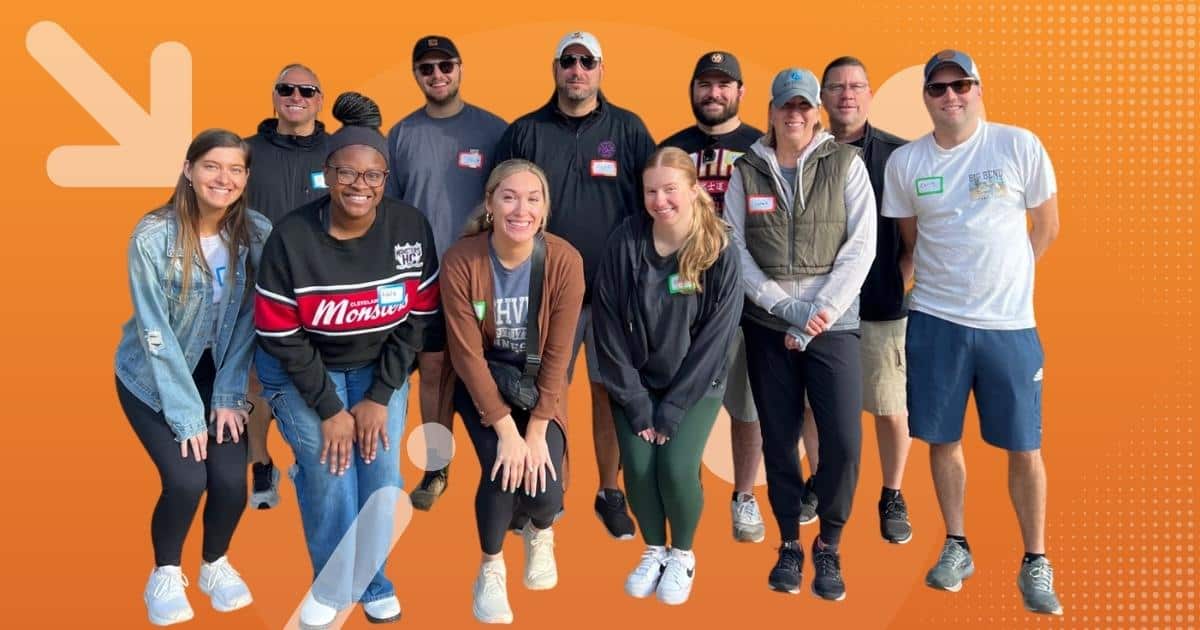People-First Culture: Playing to Win and Loving the Game

The Dual Engine of Performance and Engagement
You can push people hard and get results. Or, you can build a team that wants to run through walls with you. The magic happens when you do both.
At TalentLaunch, we call that a people-first culture: high standards on the scoreboard and real joy in the locker room. Because the way we see it—what’s the point of winning if no one’s smiling in the team photo?
We’re not magicians, by any means. We’re just a network of staffing and recruiting companies that believe in good people and good habits. And over the years, we’ve learned a few truths about what makes a culture hum.
Here are ten of the big ones we live by—our cultural playbook, if you will.
1. Culture = Performance × Engagement
The scoreboard matters. But so does the locker room. When accountability meets joy, you’ve got a team that wants to keep showing up.
- Performance: Are we accountable to the outcomes the business needs? Are we doing what’s expected—consistently?
- Engagement: Do people enjoy the experience of working here? Are friendships forming, learning happening, and energy building?
Proof in Practice
This year, we lived our theme: “We only accept the best who expect to be the best.”
It meant making some tough talent decisions, but the payoff was clear: 17% more activity with 25% fewer staff and nearly 8% quarter-over-quarter growth.
And the best part? Engagement rose for the people who wanted to compete and grow together.
High standards aren’t anti-people. They’re pro-team.
2. Leadership You Can Actually Feel
Culture doesn’t happen by memo. It happens by habit. Around here, that means:
- Be visibly present. Monthly town halls + weekly “Tuesday Tidbits” videos keep strategy, stories, and standards front-and-center.
- Lead by example. The CEO carries measurable goals (networking, business development, innovation) and shares progress.
- Signal belonging early. Handwritten welcome notes to new hires set a tone of care and accountability.
- Coach through values. When issues pop up, we anchor the conversation to the core value that’s being tested.
These are small signals that say: you matter, and I’m right here in it with you. Take them away and people would feel it immediately. That presence and visibility is the anchor.
Culture isn’t taught in memos—it’s felt in the small things leaders do every day.
3. Roots Like a Redwood
Teams with shallow roots topple fast. Our Redwood Tree Culture keeps nine different brands standing tall together. Each operating company is its own tree; the roots (core values) run deep and interlock.
We hire, coach, promote, or part ways based on alignment to those roots.
Interview questions map to values; performance dialogs start with which value is in tension.
The goal isn’t to please everyone. It’s to protect the identity that makes great work possible.
We’ll hire great people, but that doesn’t always mean they’re great for our company. And that’s okay.
4. Listening That Sparks Change
Feedback without follow-through is just noise. That’s why we layer it and collect feedback through multiple channels:
- Twice-yearly surveys plus quick post-event pulses
- Breakfast with the CEO (small-group candor with a side of coffee)
- Office visits without bosses in the room (and wow, do people open up)
- EOS to bubble up operational issues
- Exit interviews (because even endings teach us something)
Real change from real voices: One of those office visits sparked a change employees had been asking for: we added a 401(k) match. It was a structural shift that directly impacts engagement and retention.
Feedback without action is just noise.
5. When Data Calls an Audible
At one point, the field told us: “We’re not interviewing enough people.”
So we hired more recruiters, interviewed 200 more candidates a week…and starts didn’t budge.
Turns out, the problem wasn’t effort. It was focus.
82% of placements came from jobs less than 14 days old. Submitting within 24 hours of receiving an order made all the difference.
We built an automated job-order system that shut down stale orders. In 45 days, billable hours grew 15% and open orders dropped 50%.
Sometimes the obvious play isn’t the right one. Data helps us call the audible.
6. Remote Before Remote Was Cool
We’d been building for remote work since 2009, so when 2020 hit, we didn’t miss a beat. Today, each company in our network calls its own play—some fully in-office, some hybrid, some remote.
But here’s the kicker: being in the same room doesn’t guarantee connection, and being behind a screen doesn’t mean you can’t have it. We’ve learned that culture travels just fine over Wi-Fi when you set the right habits:
- If one teammate’s remote, everyone joins individually. No one’s stuck on the wall monitor like a forgotten game show contestant.
- Cameras on. Always. Because eye contact beats avatars, even through a screen.
- Make it more than meetings. Our virtual Growth Forum is basically summer camp for leaders (minus the bug spray and awkward canoeing). Two and a half days of keynotes, breakouts, and strategy huddles have built bonds as strong as any in-person retreat—without the jet lag.
Connection isn’t about the building. It’s about how you show up, screen or not.

7. Culture You Can See (and Borrow)
Our culture is on display. Literally. Our Cleveland HQ was built with 17 meeting rooms, a kitchen, and a 60-person Active Learning Room.
And then we opened it all up to the community for free.
Nonprofits, Fortune 500s, startups—they’ve all used the space. And when they do, they don’t just see our office. They feel our culture.
If you want people to believe it, let them experience it.
8. Treating Culture Like A Priority
Culture isn’t a side project. It’s a priority. We manage it with:
- Quarterly planning with leaders who own engagement
- Projects “rocks” for cultural initiatives
- A dual scorecard: engagement (our NPS-style measure) + performance (financials + activity metrics)
And when those two don’t line up? We pivot. Kind of like Ross and Chandler moving a couch. Awkward, maybe, but we get it where it needs to go.
We track engagement and performance like yards gained. Because what you measure is what you move.
9. The Bold Belief: Culture = Identity
Not everyone’s gonna love our style.
And that’s the point.
Like a player who knows their role, our culture is clear about who it is and who it isn’t. That kind of clarity attracts the right teammates for every season.
A strong culture doesn’t try to please everyone. It attracts the right people and lets others walk.
10. Pass the Ball Before You Take the Shot
A people-first culture doesn’t just keep the scoreboard moving. It helps players grow into new roles.
That starts with asking new hires about their goals and showing them the path to get there.
Take one teammate who had their eyes on leadership. Their challenge? Prove you can develop others. They spent nearly 18 months coaching and mentoring their own replacement. And when that person was ready to step up, so were they.
It’s a promotion. It’s culture in action. It’s proof that the best way to climb is by pulling someone up with you.
Growth isn’t about climbing alone—it’s about pulling others up with you.
Your Challenge for the Next Quarter
At the end of the day, culture isn’t fancy slogans or ping-pong tables. It’s habits, roots, and the way people treat each other on and off the field.
It’s leaders showing up, teams holding each other accountable, and data helping us focus on the right plays.
We’re not perfect, and we’re not for everyone. We’re okay with that. Because the folks who do suit up with us? They know they’re part of something worth fighting for.
So here’s the challenge we leave you with: build a culture that plays to win and loves the game.
When your people believe in the team photo as much as the scoreboard—that’s when you’ve really got something special.
And hey, that’s sweeter than biscuits with the boss.
Let’s Build a People-First Playbook for Your Team
Want a workplace culture that wins and lasts? Let’s talk.
FAQ: Building a People-First Culture
What is a people-first culture?
A people-first culture balances accountability with connection. It means setting high standards for performance and creating a workplace where people enjoy being part of the team. The result is stronger engagement, better retention, and consistent business results.
How do you measure a people-first culture?
We look at two lenses: performance metrics (activity, financials, results) and engagement scores (like NPS-style feedback). When both rise together, culture is healthy. If one lags, leaders can pivot quickly.
How can leaders build culture every day?
Small habits add up. Visible presence in town halls, personal notes to new hires, weekly touchpoints, and reinforcing core values in tough decisions all shape culture more than slogans ever could.
Does remote work hurt company culture?
Not if it’s intentional. Being in person doesn’t guarantee connection, and being remote doesn’t prevent it. With clear rules—like cameras on, equal virtual participation, and virtual retreats—connection can thrive across screens.









